Bangkok, Thailand’s Capital
Start in Bangkok, a thriving metropolis of old and new. Where speedy tuk-tuks transport you from ancient temple to glitzy shopping mall. Experience the famous Khao San Road, the bustling backpacker hub of South East Asia and the gateway to your backpacking adventure…
Did you know? Bangkok in the Thai language has the longest name for a city in the world, consisting of 32 separate Thai words. (Krung Thep Mahanakhon Amon Rattanakosin Mahinthara Ayuthaya Mahadilok Phop Noppharat Ratchathani Burirom Udomratchaniwet Mahasathan Amon Piman Awatan Sathit Sakkathattiya Witsanukam Prasit).
Learn more about Bangkok here
Northern Thailand
Lush mountainous scenery dotted with gushing waterfalls, lakes and rivers amidst bright green rice fields, Northern Thailand is one of the most unspoiled and beautiful areas in Thailand. Home to the highest mountain in the land (Doi Inthanon), Northern Thailand enjoys a cooler climate than the rest of the country, with temperatures reaching freezing in the highest areas.
A variety of outdoor pursuits can be enjoyed here; from mountain biking, trekking, hiking, rock climbing, rafting and kayaking. Many backpackers come here to visit an elephant sanctuary – where former working and street elephants are now being cared for. Northern Thailand is also home to the country’s ethnic minorities; the Karen and Hmong hill tribes and opportunities to arrange a homestay in a traditional village are available.
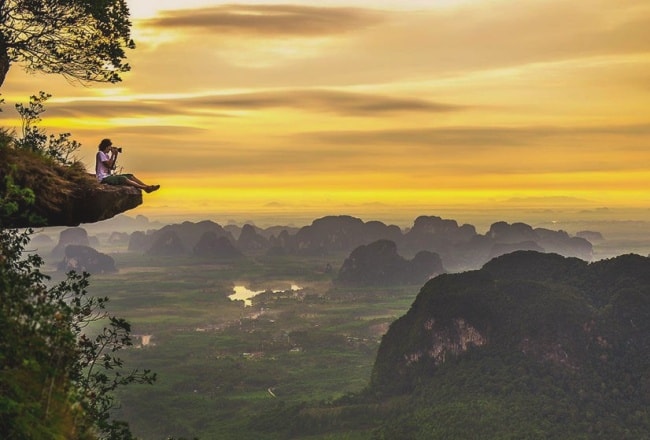
Chiang Mai – Capital of the North
Most backpackers start their explorations of Northern Thailand in the unofficial “capital of the north”, Chiang Mai. Despite what other travel guides will tell you, Chiang Mai is not a small quaint city with quiet streets full of Thai charm. It’s a large, modern and traffic-ridden city that has more tacky tourist attractions than you’d like to believe.
Its bustling weekend markets, hipster cafes and variety of cultural activities lure tourists from all over the world, most notably, nearby China. The city is also home to a fervent digital nomad scene and has more expats than any other city in Thailand. For a truthful take on the city, see this article.
However, if you travel to Chiang Mai without false expectations, the city is undoubtedly a great place to visit. It’s cheap, has amazing street food, markets and just outside the city, there is spectacular countryside to explore. One of the best things to do is go trekking in the national parks around the city.
Chiang Mai is also a fantastic place to lap up some Thai culture: learn about Muay Thai Boxing, indulge in Thai massage, try a yoga class or a retreat, take a cooking class or perhaps explore your spiritual side with a Vipassana meditation retreat in a Thai monastery.
Pai – The Backpacker Favourite
Many backpackers fall in love with the bohemian town of Pai, set in a lush green valley surrounded by waterfalls, hot springs and canyons. In recent years the town has become a hotspot for backpacker nightlife and mushroom shakes. If you’re backpacking in Pai and you’re over 30, better read this!

Quieter Towns and Provinces in the North of Thailand
Chiang Rai – Maybe you prefer the quieter town of Chiang Rai with the incredible White Temple and juxtaposing Black House. Plus, the opportunity to get off the beaten track and go trekking to visit ethnic minority groups in the area.
Chiang Dao – Just two hours north of Chiang Mai, why not stop off for a night or two, at beautiful Chiang Dao, famous for its bird watching and nature. All of the places mentioned are great places to arrange a trek into the nearby hills and visit hill tribe villages.
Mae Hong Son – Further West towards the Burmese border, the mountainous landscape of Mae Hong Son will blow your mind! For the more mature traveller, this beautiful lakeside town is blessed with great restaurants, a fun night market and gorgeous biking or hiking opportunities.
Phayao – Head East by bus or on a motorbike adventure to the little-visited lakeside town of Phayao for an authentic slice of northern Thai life! National Parks and waterfalls in this area abound.
Nan Province – A wild mountainous landscape with amazing national parks, hill tribe villages and windy roads just perfect for motorbiking. This is a little-visited area of Thailand where locals will be amazed to see ‘farang’ (foreigners).

On the Burmese Border
Mae Sot – For a taste of Myanmar in Thailand, visit Mae Sot with its Burmese culture and food and a mix of ethnic minorities. Many travellers cross the border here into Myanmar at the border town of Mayawaddy. Hpa An is your first destination in Myanmar!
Mae Salong – Right on the northern border with Burma near the Golden Triangle, this strange little town feels more like China than Thailand with its tea plantations and Chinese Temples. The scenery around here is spectacular and it gets pretty cold up here in the winter!
Northeastern Thailand
Isaan – North-eastern Thailand, also known as ‘Isaan’ is a very special side of Thailand that backpackers rarely get to see. This huge region is a vast empty area of rice fields that go on forever and authentic farming villages were it’s very rare to see a foreign (farang) face. You can explore this region
Nong Khai – Before heading into Laos, many backpackers stay at the lively border town between Laos and Thailand of Nong Khai – famous for the mysterious ‘fireball festival’ every November. This border town is considered part of Isaan too.

Central Thailand
Central Thailand is a highly compact, diverse and fascinating place of high cultural interest, where you’ll find Thailand’s 24-hour hectic capital city Bangkok (Krung Thep in local language), ancient ruins, vast national parks and even tropical islands in the Gulf of Thailand.
Islands Close to Bangkok
From Bangkok, escape to the nearby tropical islands of Koh Chang (Thailand’s second biggest island), Koh Samet and the smaller and less touristy Koh Si Chang – all within a five hour journey from the ‘Big Mango’, you’ll feel a million miles away from the traffic and noise as you laze on the gorgeous white sandy beaches.
Koh Kood
Koh Kood is an island, practically devoid of tourists, just two hours from the larger island of Koh Chang. The scene here is totally different, with deserted beaches, mangrove forests and empty roads great for exploring. Truly off the beaten track.
History and Culture in Central Thailand
If you’re looking for culture, travel just one hour north to visit Thailand’s former Siamese capital – Ayutthaya to take a walk amidst ancient temples and kingdoms. Further north, on the way to Chiang Mai, you’ll also find the even older Thai capital, Sukhothai with its 70km historical park and hundreds of temple ruins. More ruins and cultural interest, this time from the ancient Khmer Empire, can be found east towards Isaan with Phimai Historical Park – Thailand’s answer to Angkor Wat.
Khao Yai National Park
If you’re looking for outdoor adventure and fresh air, head east from Bangkok just three hours to Khao Yai National Park for trekking and nature trails.

Kanchanaburi and Sangkhlaburi
A backpacker favourite three hours West of Bangkok, Kanchanaburi provides dirt cheap accommodation and access to the beautiful countryside; waterfalls, endless rice fields and fruit trees, as well as the infamous River Kwai Bridge.
Head further east still towards the Burmese border and you’ll come across Sangkhlaburi – a little visited tranquil town with amazing scenery and interesting cultural diversity.
Hua Hin
For those looking for a more holiday feel, royal retreat Hua Hin fits the bill with a wide sandy beach, horse riding, kite surfing, seafood restaurants, golf courses and lively bars. Further down, you’ll find the lovely seaside town of Prachuap Khiri Khan with a great beach, lively markets and laid-back expat town.
Khao Sam Roi Yot National Park
The little-visited Khao Sam Roi Yot National Park can be easily reached from Hua Hin and is one of the loveliest and least visited national parks in Thailand. Camp overnight on a deserted beach and visit the legendary Phraya Nakhon Cave. From here, you can also pay a visit to the nearby Kui Buri National Park which is the best place to spot wild elephants in Thailand.

South Thailand
This is the Thailand paradise you’ve seen on postcards. White sandy beaches, swaying palm trees and colourful long tail boats bobbing on translucent turquoise waters, Thailand has more than its fair share of gorgeous tropical beaches and islands and yes, it’s true they do look like the photographs.
Both the Gulf of Thailand on the East coast and the Andaman coast on the West offer amazing snorkelling and diving, activities from Muay Thai boxing to jungle trekking and a plethora of great restaurants, bars and crazy nightlife.
South West Coast (The Andaman)
Phuket – Avoid
You’ll be faced with the effects of the original Thai tourism boom in the most overdeveloped and largest island in Thailand, Phuket. However, you can still find quieter areas if you hire a motorbike and take the time to explore and cultural Phuket town is worth a visit. All in all, this is the place in Thailand that we would recommend the least to first-time visitors.
Khao Lak – For Divers
A bit further up north, you’ll find Khao Lak, located in Phang Nga province. Khao Lak is a National Park and a jumping off point for the Similan and Surin Islands, a divers paradise for live-aboard adventures amongst the pristine reefs.

Krabi
Krabi is a province in Southern Thailand, famous for its limestone karst scenery, it is comprised of Koh Phi Phi, Railay and Ton Sai beach, as well as the island of Koh Lanta and neighbouring islands such as Koh Ngai and Koh Jum.
Once a huge hit with backpackers, Koh Phi Phi has recently become an island that many travellers are choosing to avoid due to the over-development of its undoubtedly beautiful landscapes. Famous for The Beach, Maya Bay is one of the most visited places in Thailand thanks to Leonardo Di Caprio. However, these days it is suffering from over-exploitation and environmental damage and authorities decided to close it in summer 2018 to prevent further damage.
Nearby Railay and Ton Sai beaches located on the mainland yet inaccessible by road are popular amongst the rock climbing crew. The coastal limestone karst scenery offers some of the most spectacular rock climbing in the world.
If you’re looking for a lovely island on the west coast of Thailand, chilled out Koh Lanta is an underrated castaway island which is fantastic to explore by scooter making a stop at beautiful beach after beach.
East Coast (Gulf of Thailand)
Hopping over to the other side of the Peninsula, you’ll find Koh Samui, Koh Phangan and Koh Tao. The glitzy, the wild and the sporty.

Chumphon – Jumping Off Point
Chumphon, on the mainland, is a neglected spot as people jump on the morning ferry to Koh Tao and Koh Phangan and fail to explore the deserted beaches and rainforests of the area. Surat Thani is another jumping off point for the Thai islands and where AirAsia fly to and the buses from the north arrive.
Koh Samui – Avoid
Flashpackers and holidaymakers will delight in Koh Samui‘s abundance of restaurants, activities and nightlife (although we don’t recommend it for backpackers). Personally, I think it’s a tacky, overpriced touristy island with very little left in the way of culture. The beaches are mostly ruined and the locals are fed up of serving drunk blokes on a stag do.
Koh Phangan – Full Moon Party & Yogis
The island of Koh Phangan lures thousands of backpackers each month to experience the most famous best beach party in the world – the Full Moon Party. However, this isn’t the only thing the island is famous for. Recently, a rather controversial new age community of yogis and hippies has sprung up on the West coast of the island bringing tantra, reiki, rainbow healing and a whole host of other new age therapies to make money out of spiritual seeking backpackers.
Koh Tao – For Divers
In nearby Koh Tao, diving is the order of the day and many backpackers get their underwater licence by taking an Open Water Course. You can take the course with a PADI certified school or an SSI certified school. (The links go to our recommended providers). Courses cost around $280 USD. For a complete guide to diving in Koh Tao see here.
Make sure you take a day trip to the beautiful Ang Thong Marine Park while you’re in the area.
Khanom – Hidden Gem
Located on the mainland Khanom is a hidden gem that’s overlooked by most travellers in favour of the more popular Gulf Islands. However, those who stop here a while will be rewarded with empty beaches, mangrove forests, waterfalls, beautiful landscapes and the opportunity to spot pink dolphins!

Koh Lipe
Further south you’ll find tropical paradise Koh Lipe which remains (for now) a tranquil haven, far removed from some of the busier islands – make sure you visit now before it’s too late!
Khao Sok National Park
In between the skinny strip of land that separates the two coastlines you’ll find Khao Sok National Park, one of the oldest rain-forests in the world, home to many wild beasts such as the Malayan Tapir, the Asian Elephant, Sambar Deer, Wild Boar, Pig Tailed Macaque, White Handed Gibbon and even bears and tigers! See the official Thai National Park website for more info.
Hat Yai
This city lies close to the Malaysian border and is a popular spot with both Thai and Malay tourists. Despite this, most backpackers rarely make it this far south. Hat Yai is often skipped over, although it is home to some stunning religious sites and also boasts the beautiful Ton Nga Chang Waterfall.






 29/12/2025
29/12/2025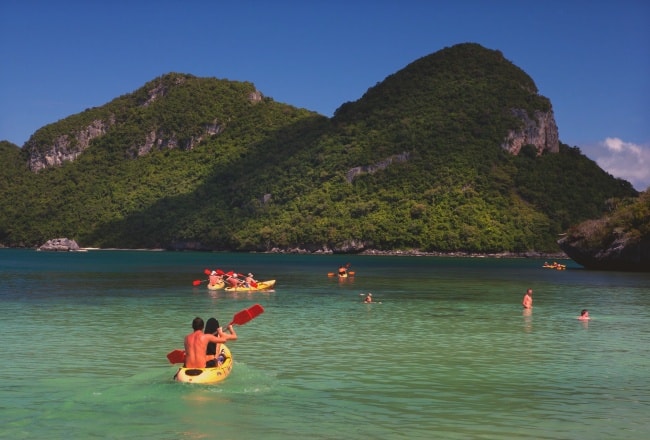
















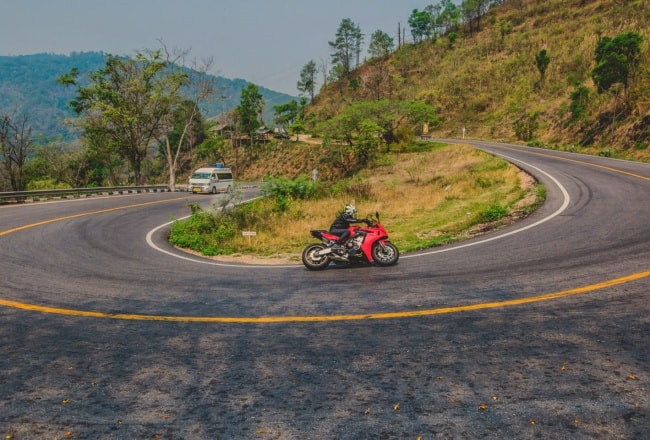


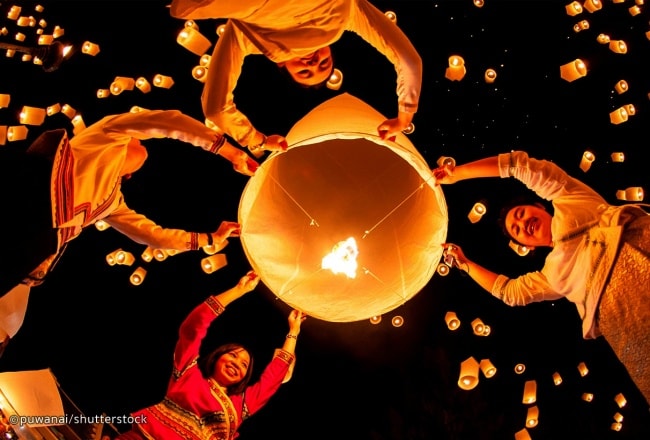








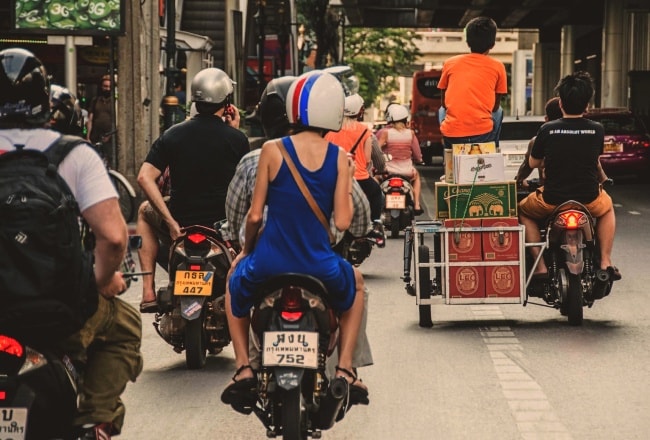







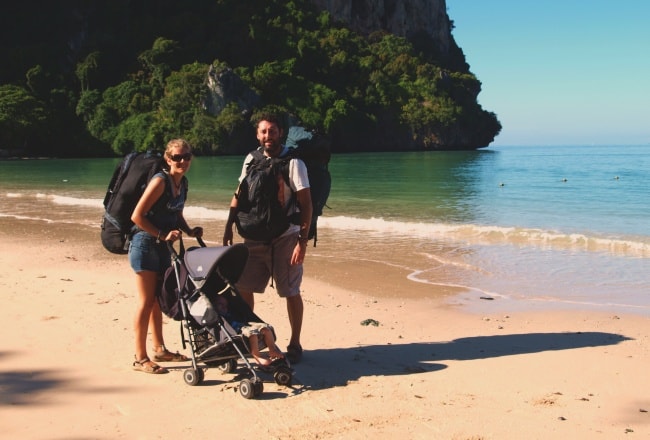



























Jordan VituHello, my name’s Jordan and I’m obsessed with travelling overland. Seeing how cultures change while travelling slowly captivates me; and doing so in an eco-friendly way, preserving the cultures and landscapes that so many travellers yearn to explore, has given me my travelling purpose.